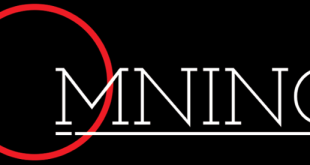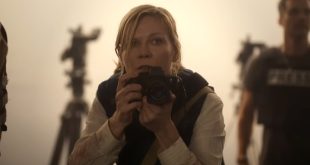Imagine yourself in an all-white jail cell where there is only a cold metal bench, a hard bed with one flat pillow and a toilet that sits in the darkest corner of the room. Your imagination won’t help you get the full experience of the life of an inmate, but virtual reality will definitely take you to a whole new world you never knew existed.
Dr. Bobbie Ticknor, associate professor of criminal justice, created and developed the new virtual reality lab located in Odum Library, room 2220.
The project started around January. It only took six weeks for Dr. Ticknor to get everything up and running before she taught the first class to use the lab in July.
The funding for the lab was supported through the College of Humanities and Social Sciences, as well as other outside sources. Alan Bernstein, dean of Odum Library, provided the room, and IT covered some of the funding for the TVs. All in all, the lab has about $1,500 invested into it.
“It’s really been a village bringing all this together,” Dr. Ticknor said. “As of right now, the lab can accommodate up to 24 people at a time.”
With her background in software development, Dr. Ticknor said that she wanted to open the lab because she wanted to do something more meaningful, especially on campus.
“I thought that [it would] be great if we developed a lab where we can share the technology with other people in the VSU campus and the VSU family,” she said. “Essentially, the goal here is to allow the students to: one, have some experimental learning opportunities, but two, maybe experience something that there’s no other way they could experience it. It’s also a really good way to kind of build social awareness, culture awareness and develop empathy.”
While Dr. Ticknor teaches criminal justice, the lab is used for more than those classes. She is currently working with professors in other departments so that the virtual reality lab can be used in other courses like science, African American Studies and dance classes. She already has had 10 to 15 professors ask how they can incorporate the new technology into their classes.
“This is not a criminal justice lab,” Dr. Ticknor said. “This is the VSU Virtual Reality Lab, and I really wanted it to be a big part of this campus because I believe the technology can change the way we learn. I think students will benefit from it by actually seeing it and experiencing what things are like.”
Lecturing and presentations have always been some of the traditional teaching methods implemented in a lot of college classrooms, but since society has evolved into a technology-based society, those traditional styles are now less frequent. Instead of phasing them out, the virtual reality lab is meant to support those traditional learning styles, according to Dr. Ticknor.
“Lecturing is great, and we’re not trying to replace traditional methods by any stretch,” she said. “We still want our faculty members sharing their knowledge and providing students with good sound lectures. This is more of a way to augment what they’re already doing and in hopes that seeing these things can really impact the motivation and engagement for the students.”
Dr. Ticknor also wants the lab to help bring another learning method—gamification—into students learning habits. Gamification allows students to understand complex problems and concepts while playing a game. Dr. Ticknor said that this learning style will help students get more engaged and responsive to the things they’re learning.
“You’re tapping into learning in that way of making it more exciting, more motivating, more engaging, especially with this generation of college students,” she said. “It’s just taking these concepts that are done out in the field, done in the research, but bringing them into the classroom so our students can get the most benefit from them.”
With the lab up and running smoothly, Dr. Ticknor already has some goals and improvements she wants to implement in the lab. One of her goals is to start introducing augmented reality.
While virtual reality is a simulation in a headset that minimizes the real world for you, augmented reality lets you use glasses or cell phones to look at the real world with simulated content. Pokémon Go is one of the most famous augmented realities.
“I think that would be really neat, especially with the different types of content we have,” Dr. Ticknor said.
Another of her goals is a virtual cave, which makes the whole room a simulation by using projectors. Dr. Ticknor said that she wants to be able to bring 40 to 50 students into the lab to experience a simulation at once. But virtual caves cost roughly around $100,000.
“If I get some outside funding for that, it would be a good direction to go because then the entire class can be in a simulation at one time without having to wear anything,” she said. “But that’s definitely more down the road as the technology becomes a little more affordable.”
Although the virtual reality lab is solely used for educational purposes, it can also be used for many other things like career opportunities, mental health and recruitment. Dr. Ticknor is working on using 360VR cameras to take footage of the VSU campus and develop a virtual tour that all can experience, even from the comfort of their home.
“We have a beautiful campus; we should completely have that in a simulation so that people can experience how gorgeous it is here,” she said. “I think it would be a nice admissions tool so people are interested in coming to VSU. They can actually do a virtual tour before they get here.”
In addition to having all the technology, there is also a developer workstation where students, faculty and staff can create simulations. Those students who are looking to enter a career in software and simulations development have a place to practice doing so in the virtual lab at the developer’s station.
“Computer science students who are looking to get into this: you can walk out, once you’re skilled in this area, [and] you can make jobs starting out at $140,000 a year,” she said. “So, lots of jobs are happening now specific to this type of industry.”
Dr. Ticknor said that the lab has been the coolest experience she’s had as a professor and that she is amazed at how students light up and get excited about learning just by being in a simulation.
“The responses have been great,” she said. “They say it really increases their motivation and engagement in the classroom. Seeing them just get that excited to the point where they just wanted to personally thank me at the end of class, that’s just not something you see, so it’s very moving.
Navella Holloway, a junior criminal justice major, said that the virtual reality lab helped her narrow on what she wanted to do with her criminal justice major.
“In my opinion, it gives you a closer view of what it’s going to be like in the field versus just reading from a textbook,” Holloway said. “It’s definitely a lot better than reading from a textbook. Virtual reality helped me to see that I do like the feeling of interviewing people and trying to get their side of the story, and also the law enforcement side.”
Dr. Ticknor said that with the constant evolution of technology and learning, the lab will continue to grow and be a place where students can escape to a place where they never dreamed of going.
“I’m doing this because I really believe in this, and I believe in what it can do for our students,” Dr. Ticknor said. “I want to let faculty members be able to bring their material alive. We haven’t ever been able to do that before. We’re now living in a time where we can experience these things that we never could experience before, and I just think that’s the coolest thing.”
Written by Lenah Allen, Campus Life editor. Photo Courtesy of Lenah Allen
For more Campus Life stories, click here.
 The Spectator The independent student newspaper of Valdosta State University
The Spectator The independent student newspaper of Valdosta State University








